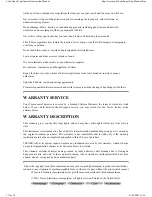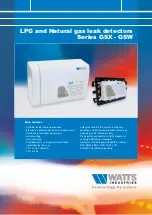
Lobo SuperTraq Operator Instruction Manual
http://tesoro.com/LoboSuperTraq_Manual.htm
7 sur 18
21/06/2007 14:36
Hold the quarter in your fingertips and move the quarter from side to side about 12 inches in front of the
searchcoil.
Gradually move the quarter closer to the searchcoil—as you continue to move it from side to side—until
you hear the threshold sound increase. This increase in volume is called the “target response sound.”
Continue to move the coin to test the target response sound. As you do this, try varying the distance or
angle of the coin. Try varying the speed you move the coin. Try passing it in front of the edge of the
searchcoil and then under the center. Notice the differences in the target response sound with each
change.
Repeat the test with each coin. Notice that the detector responds to each coin although the target response
sound may vary, sometimes subtly. Your detector will respond to objects made of any kind of metal
when the object is in the searchcoil's sensitivity area or “range.” A detector operating in a mode that
responds to all types of metal targets is referred to as “All Metal Mode."
Retune the Threshold
Hold the quarter still about 2 to 4 inches from the searchcoil, in line with the searchcoil center. Listen to
the target response sound for 1 or 2 seconds. Do not move the quarter!
Notice that the target response sound will decrease to the regular level of the threshold sound in just a
few seconds. This change in sound is the threshold being automatically retuned. Now, move the quarter
from side to side, going past the edge of the searchcoil each time. Notice the regular threshold sound is
gone and the target response sound is now a “beep” that occurs when the target passes in front of the
searchcoil center. This threshold retuning technique is used in the field to “pinpoint” the exact location of
a object.
Take the quarter away from the searchcoil and wait several seconds. Notice the regular threshold sound
returns—as the detector automatically retunes the threshold to its original level. Move the quarter close
to the searchcoil momentarily and notice the loud continuous target response sound has returned also.
Take the quarter away again. A detector operating in this way is called “All Metal Mode with Fast Auto
Tune.”
Use the Pinpoint Feature
Hold the quarter still near the searchcoil for a few seconds and notice the detector automatically retunes
itself. Moving the coin from side to side will result in the target response sound becoming a “beep” as
demonstrated in the previous section. While holding the quarter still near the center of the searchcoil,
press and hold the mode switch to PINPOINT.
Mode switch held to PINPOINT
Then, while holding the switch to PINPOINT, try moving the coin from side to side. Notice that the
normal threshold sound has returned and notice the target response sound is an increase in volume and
not a “beep.” Take the quarter away from the searchcoil for a few seconds and try it again. Now, try this
test with the different coins listening for the differences in the sounds the various coins make.
Holding the Mode switch in the PINPOINT position removes the Auto Tune until the switch is released.
A detector operating in this way is referred to as “No-Motion Pinpointing” because motion is not needed
to generate a target response. This technique is used in the field to “pinpoint” the exact location of a
object.
Functions Demonstrated in Step 4: 1) How the All Metal Mode target response sound will vary
depending on various factors such as what type of metal targets are buried in the ground, how deep they
are, how fast you move your searchcoil and so on. 2) How the threshold is automatically retuned with
Fast Auto Tune and how this affects the target response sound. 3) How the Pinpoint Mode removes the
Auto Tune feature allowing motionless pinpointing.
Step 5 - Perform an air test in Discriminate Mode




































